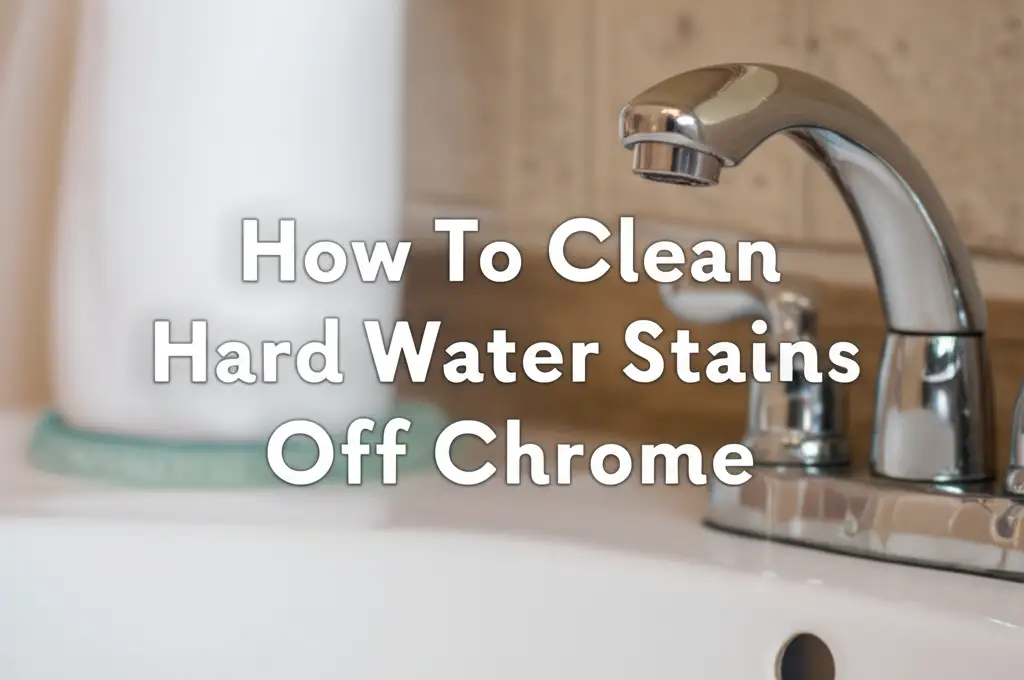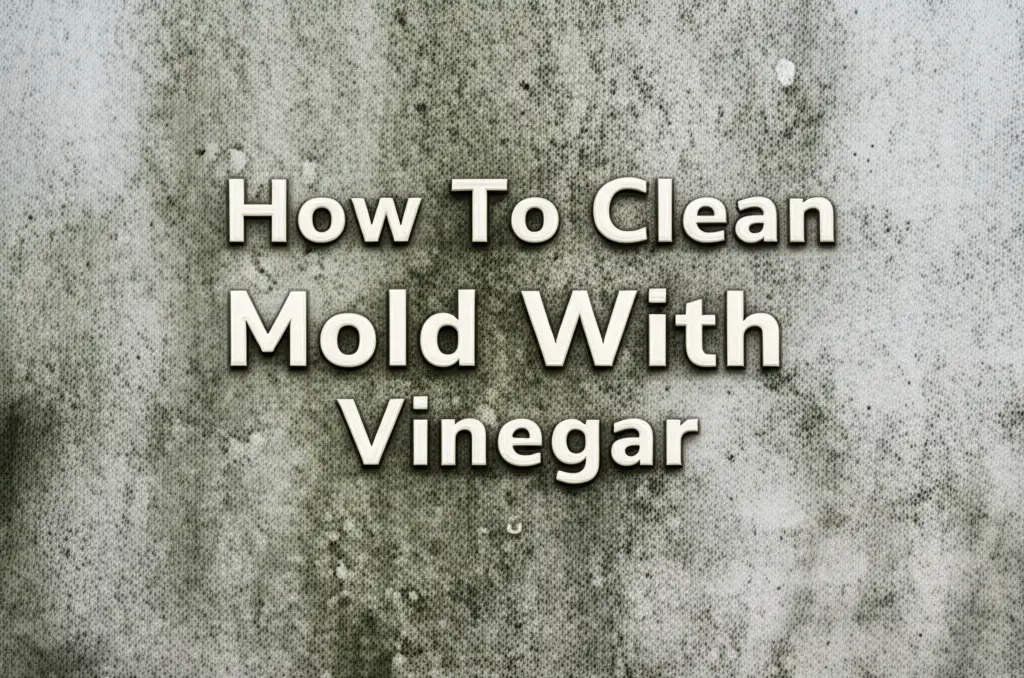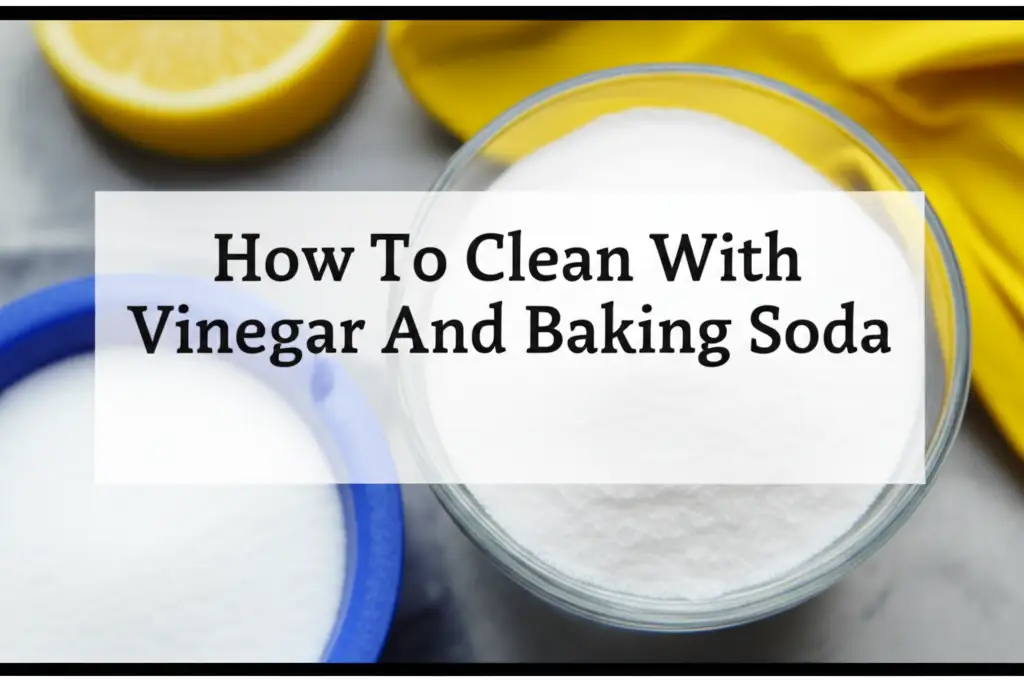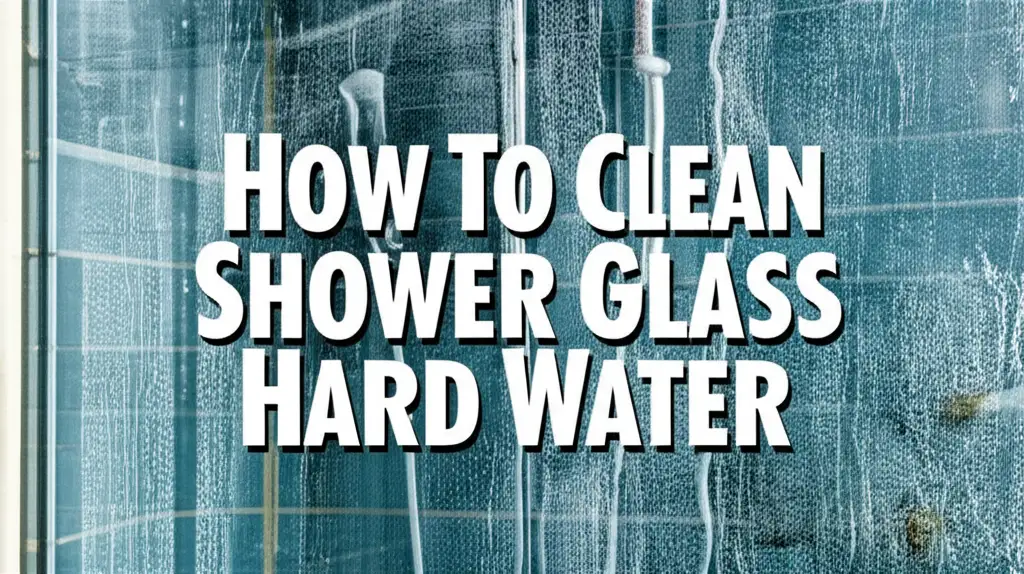· Home Cleaning · 17 min read
How To Clean Clogged Shower Head
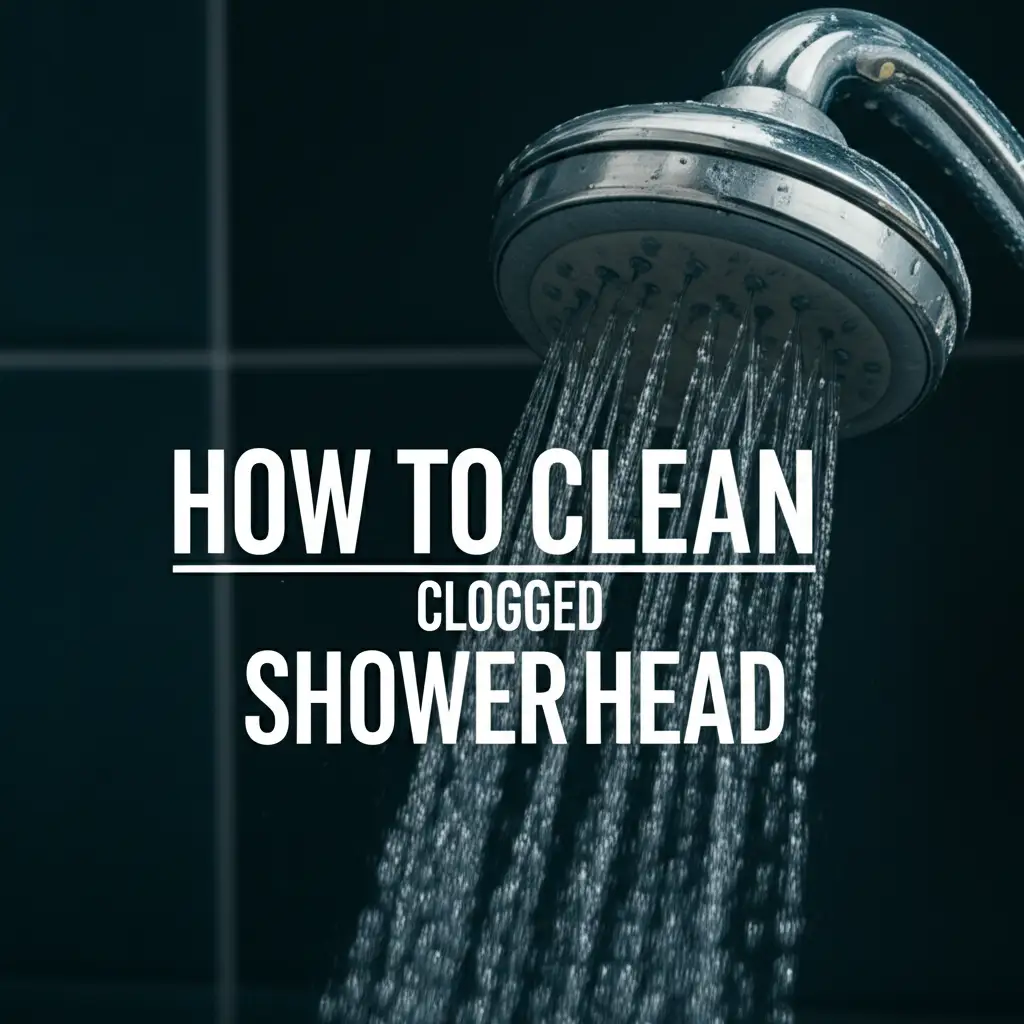
Revitalize Your Shower: How to Clean a Clogged Shower Head Effectively
Ever step into your shower hoping for a refreshing spray, only to be met with a sad dribble or erratic streams? I know the feeling. That frustrating experience often points to a clogged shower head. Over time, mineral deposits from hard water build up inside the tiny nozzles. This blocks the water flow and reduces your shower’s performance.
But don’t worry, restoring your shower’s power is easier than you think. This guide will show you simple, effective ways to clean a clogged shower head. We will cover common causes, essential tools, step-by-step cleaning methods, and tips for prevention. Get ready to enjoy powerful showers again!
Takeaway
- Soak your shower head in white vinegar to dissolve mineral buildup.
- Scrub the nozzles with a brush to remove stubborn deposits.
- Rinse thoroughly and test the water flow.
- Perform regular cleaning to prevent future clogs.
To effectively clean a clogged shower head, soak it in a solution of white vinegar to dissolve mineral deposits and limescale. Then, gently scrub the nozzles to remove any remaining debris. Finally, rinse the shower head thoroughly with clean water to restore optimal water flow and pressure.
Understanding the Culprit: What Clogs Your Shower Head?
A clogged shower head often signals issues with your water supply. The main culprit is usually hard water. Hard water contains high levels of dissolved minerals, especially calcium and magnesium. These minerals build up inside the shower head over time.
This buildup appears as a white, crusty substance called limescale. Limescale can reduce water pressure and even change the spray pattern. Rust from old pipes or fixtures can also contribute to blockages. Mold and mildew might grow in damp shower environments, adding to the problem.
Soap scum, a residue from soap and body oils, can also accumulate. It mixes with mineral deposits, making clogs more stubborn. Understanding these common causes helps you choose the right cleaning method. It also helps prevent future blockages from forming.
Regular cleaning is vital to combat these issues. Ignoring them will only worsen the problem. You might find yourself with a completely blocked shower head.
The Role of Hard Water and Limescale
Hard water contains dissolved mineral ions. As water evaporates from your shower head, these minerals are left behind. They form hard, chalky deposits. These deposits are known as limescale.
Limescale builds up inside the tiny nozzles of your shower head. This narrows the openings for water to pass through. Over time, the openings become completely blocked. This causes weak water pressure or a distorted spray. Cleaning methods must target these mineral deposits directly.
You can learn more about tackling specific mineral problems in our guides on how to clean shower head from limescale and how to clean hard water from shower head. These resources offer detailed steps to address severe mineral accumulation.
Other Contributors to Clogs
While minerals are the primary cause, other factors contribute to shower head clogs. Rust particles can break off from old pipes. They then travel through the water line and lodge in your shower head. This creates blockages that reduce flow.
Mold and mildew thrive in moist environments. They can grow inside and around the nozzles of your shower head. This organic matter adds to the physical blockage. It also poses potential health concerns.
Soap scum is another common issue. It forms when soap residue mixes with minerals in hard water. This sticky, unsightly film can coat the shower head. It makes it harder for water to pass through the openings. Regular cleaning addresses all these various contaminants.
Essential Tools and Materials for Cleaning
Before you start cleaning your clogged shower head, gather all the necessary supplies. Having everything ready makes the process smoother and faster. Most of these items are common household products. You likely have them in your pantry or cleaning cabinet already.
You do not need many specialized tools. Simple household items work best for this task. I always make sure I have these things on hand. This preparation ensures a quick and effective cleaning session.
Basic Cleaning Supplies
The most important item you will need is white distilled vinegar. Vinegar is an excellent natural descaler. Its acidity helps break down mineral deposits and limescale. Make sure you have enough to fully submerge your shower head or fill a bag around it.
You will also need a sturdy plastic bag. A gallon-sized Ziploc bag works well. A rubber band or twist tie helps secure the bag around the shower head. This prevents the cleaning solution from spilling.
An old toothbrush or a small scrubbing brush is essential. These tools help dislodge stubborn mineral deposits. A soft cloth or sponge is useful for wiping down the shower head. It also helps with the final polish.
For very stubborn clogs, a small wire or a toothpick can clear individual nozzles. Always use these tools gently to avoid damage. These basic supplies form the core of your cleaning kit.
Optional Tools for Stubborn Clogs or Disassembly
Sometimes, clogs are very severe or your shower head needs a deep clean. In these cases, you might consider removing the shower head. A wrench or pliers can help loosen the connection. Wrap a cloth around the shower head’s base to prevent scratching.
For persistent mineral buildup, a baking soda paste can offer extra scrubbing power. Mixing baking soda with a little water creates an abrasive yet gentle paste. Commercial descalers are also an option. They contain stronger acids designed for tough mineral deposits.
Always check the cleaner’s compatibility with your shower head material. Some harsh chemicals can damage certain finishes. Reading the product label is always important. These optional tools give you more options for tougher jobs.
The Go-To Method: Cleaning Your Clogged Shower Head with Vinegar
White vinegar is a cleaning powerhouse, especially for mineral deposits. Its acetic acid dissolves limescale and other mineral buildup effectively. This makes it the most popular and often recommended method for how to clean a clogged shower head. I find this method simple and highly effective.
The process is straightforward and does not require much effort. You can usually clean your shower head without even removing it. This saves time and avoids any potential damage from detachment. Let’s walk through the steps to get your shower head flowing freely again.
Method 1: Soaking While Attached (The Bag Method)
This is the easiest way to clean your shower head. You do not need to remove it from the pipe. First, pour enough white vinegar into a plastic bag to completely submerge the shower head. You might need about 1-2 cups depending on the size of your shower head.
Carefully place the bag over the shower head. Make sure all the clogged nozzles are submerged in the vinegar. Secure the bag tightly around the shower arm with a rubber band or twist tie. This prevents the vinegar from leaking out. Let the shower head soak for at least 30 minutes to an hour. For severe clogs, you can leave it overnight. The vinegar will work to dissolve the mineral deposits.
After soaking, remove the bag. Use an old toothbrush or small brush to scrub the nozzles. You will see the loosened mineral deposits come off easily. Turn on the hot water and let it run for a few minutes. This flushes out any remaining debris from inside the shower head. Your shower head should now spray much better. For more details on this technique, check out our guide on how to clean shower head with vinegar. This process works wonders for light to moderate clogs.
Method 2: Detaching for a Deeper Soak
For extremely clogged shower heads or intricate designs, detaching it offers a more thorough cleaning. First, carefully twist the shower head counter-clockwise to loosen it. If it is stuck, you may need a wrench. Use a cloth to protect the finish if using tools.
Once removed, place the entire shower head into a bucket or bowl. Pour enough white vinegar into the container to fully submerge the shower head. Let it soak for several hours or overnight. The longer soak allows the vinegar to penetrate deep into the internal components.
After soaking, use a small brush to clean the individual nozzles and any crevices. Rinse the shower head thoroughly under running water. Reattach it to the shower arm, twisting clockwise until secure. Turn on the water to flush out any loosened debris. This method ensures all parts of the shower head get proper attention. It is a more intensive approach for stubborn clogs. You can also apply similar principles when learning how to clean a shower with vinegar in general.
Beyond Vinegar: Alternative Methods for Stubborn Clogs
While vinegar is a fantastic, natural cleaner, it might not be suitable for every shower head or every clog. Some shower head finishes are sensitive to acidic solutions. Also, certain clogs might be too stubborn for vinegar alone. In such cases, alternative cleaning methods become necessary.
These methods offer different approaches to break down tough deposits. They provide options if you prefer not to use vinegar. They can also work in combination with a vinegar soak for maximum effect. I like having a few tricks up my sleeve for any cleaning challenge.
Using Baking Soda and Water
Baking soda offers a mild abrasive quality and can help with soap scum and light mineral deposits. For this method, create a thick paste by mixing baking soda with a small amount of water. The consistency should be like toothpaste. This paste provides scrubbing power.
Apply the baking soda paste directly to the clogged nozzles. Use an old toothbrush to work the paste into the openings. Let the paste sit for about 15-30 minutes. This allows it to penetrate and loosen the buildup.
After the waiting period, scrub the nozzles vigorously with the toothbrush. The abrasive action of the baking soda helps remove the grime. Rinse the shower head thoroughly with warm water. This method is gentler than vinegar and can be effective for lighter clogs or as a follow-up. Our guide on how to clean shower with baking soda offers more general cleaning tips with this versatile product.
Citric Acid or Commercial Descalers
For particularly stubborn hard water buildup, citric acid is an excellent alternative. It is a natural acid, often found in lemons, but available as a powder. Mix about two tablespoons of citric acid powder with one cup of hot water. This creates a powerful descaling solution.
You can use this solution in the plastic bag method described earlier. Submerge the shower head and let it soak for an hour or two. Citric acid is highly effective at dissolving mineral deposits. It is also generally safe for most shower head finishes.
Commercial descalers are another option for extreme clogs. These products are specifically formulated to break down mineral buildup. Always read the instructions carefully before using a commercial descaler. Ensure it is safe for your shower head’s material. Wear gloves and ensure good ventilation when using these stronger chemicals. If you are looking for methods without vinegar, exploring options like how to clean faucet head without vinegar can offer valuable insights.
Tackling Different Shower Head Types: Specific Considerations
Shower heads come in various materials and finishes. What works perfectly for a chrome shower head might not be ideal for a plastic one. Understanding these differences is key to effective and safe cleaning. Using the wrong cleaner can damage the finish or the internal components. I always check the material before choosing my cleaning solution.
Some materials are more sensitive to harsh acids or abrasive scrubbers. Others are robust and can handle stronger treatments. Knowing your shower head’s type helps you select the gentlest yet most effective approach. This prevents accidental damage during the cleaning process.
Cleaning Chrome and Metal Finishes
Chrome and other metal finishes like brushed nickel or brass are common. They are generally durable but can be susceptible to scratching. When cleaning these types of shower heads, avoid abrasive scrubbers. Steel wool or harsh scouring pads can permanently mar the surface.
White vinegar is usually safe for chrome and most metal finishes. However, avoid prolonged soaking, especially for brass or bronze, as it might dull the finish over many hours. A quick soak (30-60 minutes) followed by gentle scrubbing is best. Always rinse thoroughly afterward to remove any acidic residue.
For shiny chrome, a soft cloth and a non-abrasive cleaner work well. You can even use a bit of car wax on chrome after cleaning for extra shine and protection. If you have a how to clean chrome shower head, remember that a gentle approach is always preferred to maintain its luster.
Handling Plastic and Rubber Nozzles
Many modern shower heads feature plastic bodies and rubber nozzles. These are generally very resilient to mineral buildup. The flexible rubber nozzles often allow you to simply rub away mineral deposits with your thumb. This simple action often clears minor clogs.
For plastic parts, white vinegar is usually safe and effective. You can soak plastic shower heads without much concern for damage. Avoid extremely hot water with plastic, as it could warp the material over time. Stick to warm or cool water for rinsing.
Do not use harsh chemical cleaners or strong solvents on plastic shower heads. These can cause discoloration, cracking, or damage to the plastic. Always opt for milder solutions like vinegar or baking soda for these types. They provide effective cleaning without risking material integrity.
When to Disassemble: Deep Cleaning Your Shower Head
Sometimes, a simple soak and scrub are not enough. If your shower head is severely clogged, or if water pressure remains low after external cleaning, it might be time to disassemble it. This allows you to access and clean the internal components. It often reveals hidden buildup that external methods cannot reach.
I consider disassembly a “last resort” for routine cleaning. But it is essential for a true deep clean. It also helps diagnose if the problem lies deeper within the plumbing. This process requires a bit more care but is often very rewarding.
Steps for Removing and Cleaning Internal Parts
Before starting, turn off the water supply to your shower. This prevents any accidental leaks or sprays. Most shower heads twist off counter-clockwise from the shower arm. If it’s too tight, use a wrench. Wrap a cloth around the base to protect the finish from the wrench’s jaws.
Once the shower head is off, you might see a small rubber washer or filter screen inside. Carefully remove these. Note their position so you can put them back correctly. Place these small parts in a bowl of vinegar for soaking.
Inside the shower head body, you will find various internal components. Some are removable, like flow restrictors or small screens. Use a small brush or toothpick to clean any visible gunk or mineral deposits from these parts. Soak them in vinegar too. Ensure all nooks and crannies are clean.
Reassembly and Testing
After cleaning all the internal parts, rinse them thoroughly with clean water. Make sure no vinegar or debris remains. Reassemble the shower head, putting all components back in their original positions. Pay attention to any rubber washers or O-rings; they are crucial for a watertight seal.
Screw the shower head back onto the shower arm, twisting clockwise until it’s hand-tight. Avoid overtightening, as this can damage the threads or the shower head itself. Turn the water supply back on slowly.
Test the shower head by running both hot and cold water. Check for leaks around the connection point. Observe the spray pattern and water pressure. You should notice a significant improvement. If leaks occur, gently tighten the connection a bit more. If the problem persists, you might need to check the washer’s condition.
Preventative Measures: Keeping Your Shower Head Clear
Cleaning a clogged shower head can be satisfying, but preventing clogs is even better. Regular maintenance can save you time and effort in the long run. It also ensures consistent water pressure and a pleasant showering experience. I find that a little effort often prevents bigger problems later.
Preventative measures aim to reduce mineral buildup before it becomes a problem. They also address other common causes of clogs. By incorporating a few simple habits into your routine, you can keep your shower head flowing freely.
Regular Quick Wipes and Softening the Water
A simple habit that makes a big difference is a quick wipe-down. After each shower, wipe the nozzles and surface of your shower head with a soft cloth. This removes water droplets before they can evaporate and leave mineral deposits. This is especially useful in hard water areas.
Consider installing a water softener if you live in an area with very hard water. A water softener removes minerals like calcium and magnesium from your entire home’s water supply. This not only protects your shower head but also other appliances. It also makes soap lather better. While a bigger investment, it offers a permanent solution to hard water problems.
Even without a full water softener, you can use shower head filters. These filters attach to your shower arm and trap minerals before they reach the shower head. They need regular replacement, but they offer an easier solution.
Occasional Short Soaks and Flushing
Every few weeks or months, depending on your water hardness, perform a quick vinegar soak. You can use the bag method for 30 minutes. This proactive soak dissolves any minor mineral buildup before it becomes a major clog. It keeps the nozzles clear and helps maintain optimal water flow.
After cleaning or soaking, always flush the shower head with hot water for a few minutes. This washes away any loosened debris from inside. It ensures everything is clear before your next shower. This simple step is vital for completely clearing the internal pathways.
Regularly inspecting your shower head’s spray pattern can also alert you to potential issues early. If you notice a few streams going astray, it is a sign that a quick cleaning is due. Addressing small issues promptly prevents them from growing into large clogs.
FAQ Section
How often should I clean my shower head?
The cleaning frequency depends on your water hardness. In areas with hard water, cleaning every 1-3 months is ideal. If your water is soft, you might only need to clean it every 6-12 months. Watch for changes in water pressure or spray pattern. These are signs it’s time to clean.
Can I use bleach to clean my shower head?
I do not recommend using bleach to clean your shower head. Bleach can damage certain finishes, especially chrome or brass. It does not effectively dissolve mineral buildup, which is the main cause of clogs. Bleach is better for sanitizing surfaces, not for descaling. Use vinegar or specific descalers instead.
What if vinegar doesn’t work for my clogged shower head?
If vinegar doesn’t work, the clog might be severe or not just mineral-based. Try a longer soak (overnight) or use a stronger solution like citric acid. You can also try carefully disassembling the shower head to clean internal parts directly. For very stubborn cases, consider a commercial descaler, but check its compatibility with your shower head material.
Can I damage my shower head by cleaning it?
Yes, you can damage your shower head if you are not careful. Using abrasive scrubbers on delicate finishes can cause scratches. Harsh chemicals can discolor or erode certain materials. Overtightening when reassembling can damage threads. Always use gentle methods first and check the shower head’s material before using strong cleaners.
How do I know if my shower head is permanently clogged?
A shower head is rarely “permanently” clogged if you can disassemble it and clean all parts. However, if you have tried all methods, including deep cleaning and descaling, and water flow remains poor, it might be due to internal corrosion or a damaged flow restrictor. In such cases, replacing the shower head might be the most practical solution.
Is it better to clean the shower head attached or detached?
Cleaning it while attached is easier and often sufficient for light to moderate clogs. The bag method is simple and effective. However, for a truly deep clean or very stubborn clogs, detaching the shower head allows you to fully submerge it and access internal components. Choose the method based on the severity of the clog.
Conclusion
A clogged shower head can turn your daily shower into a frustrating experience. But with the right knowledge and tools, you can easily restore its powerful flow. We have explored the common causes, like hard water and limescale. We also covered effective solutions from simple vinegar soaks to deeper disassembly.
Remember, consistent maintenance is key to a clog-free shower. Regular quick cleanings and occasional deeper treatments with vinegar or alternative solutions will keep your shower head working perfectly. Don’t let mineral buildup dampen your day. Take action today to clean your clogged shower head and enjoy refreshing, high-pressure showers once again. Your bathroom oasis awaits!
- shower head cleaning
- clogged shower
- hard water removal
- limescale
- DIY cleaning
- bathroom maintenance
- vinegar cleaning

